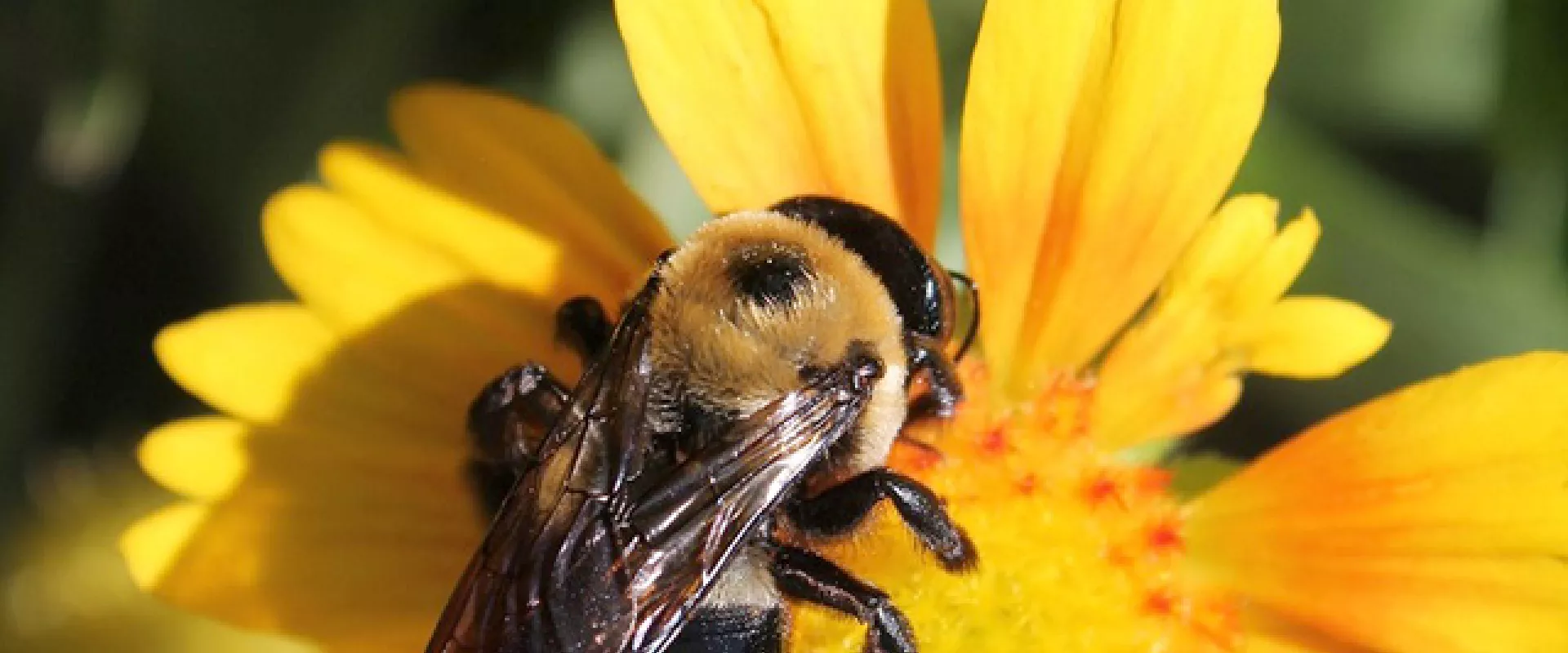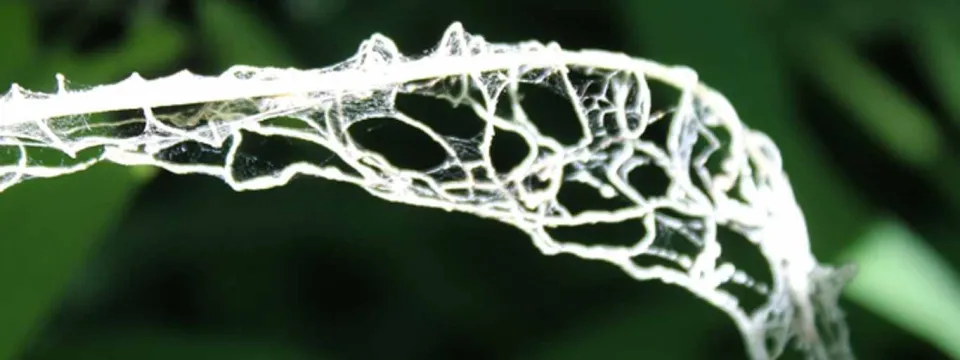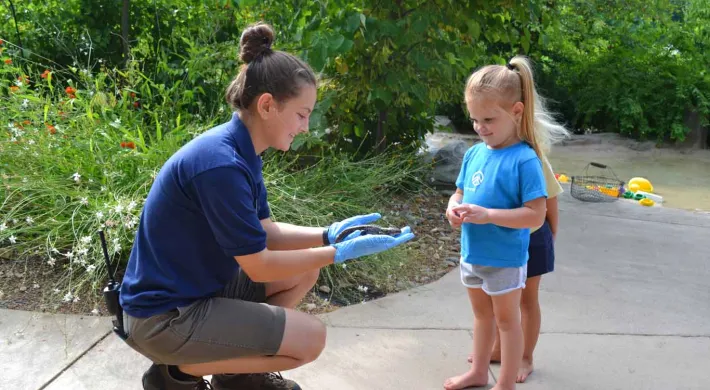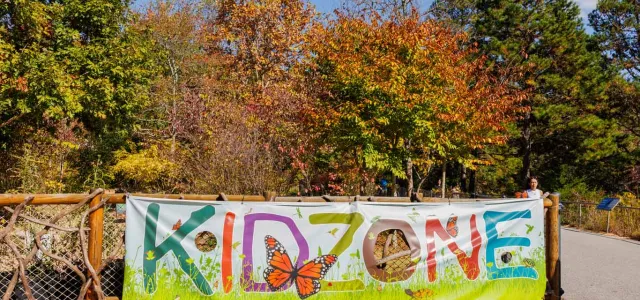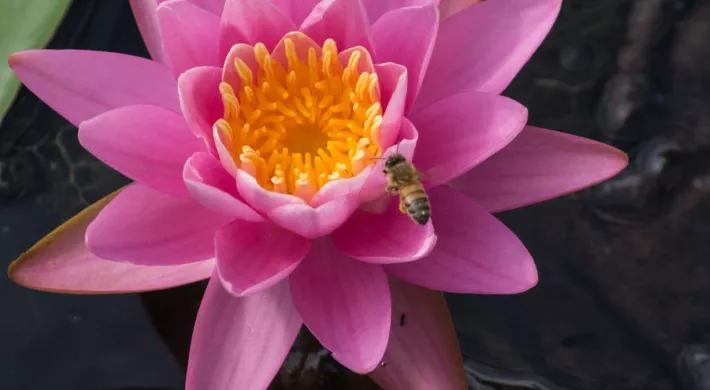Written by Kathy Osborne, Kidzone Coordinator, North Carolina Zoo
The next time you are in Kidzone, take a moment to slow down and connect with nature. In case you do not know, Kidzone is our nature play space. We encourage children to play and adults to be in the present moment. If you take the time to slow down and look at some of our native plants, you might find all sorts of treasures! Here is a sample of some of the invertebrates we have found this year.
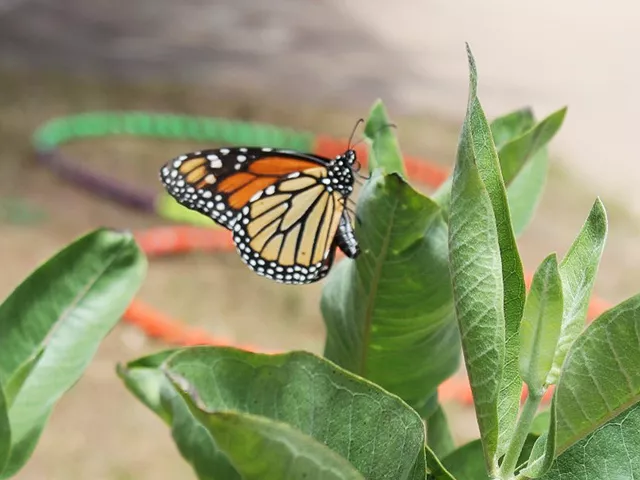
Here is a female monarch butterfly that is depositing eggs on some milkweed early this spring. We put in a pollination station a couple of years ago, and this was our first monarch sighting in the spring. This female was very likely on her way north from overwintering in Mexico.
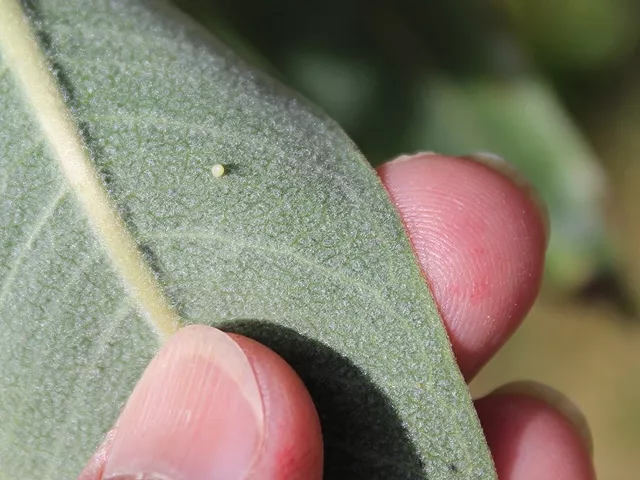
Have a closer look at one of her eggs. Notice how the egg is on the fuzzy underside of the leaf. She places eggs on several different milkweed plants to help ensure they have enough food and make it more difficult for predators to find them.
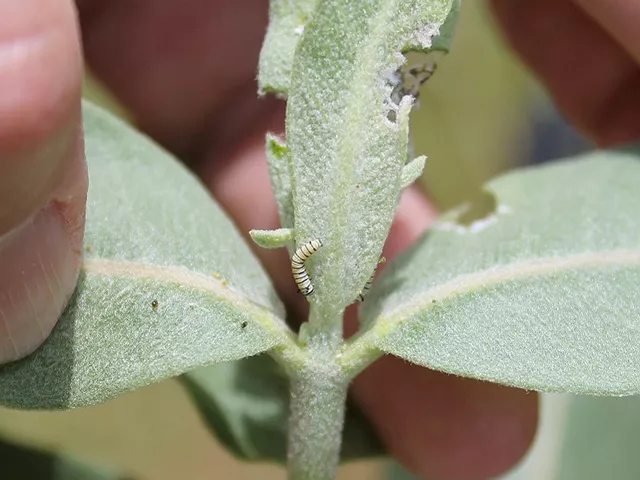
This is an early instar monarch caterpillar. They tend to like fresh, tender leaves. See the place on the leaf where it has been munching?
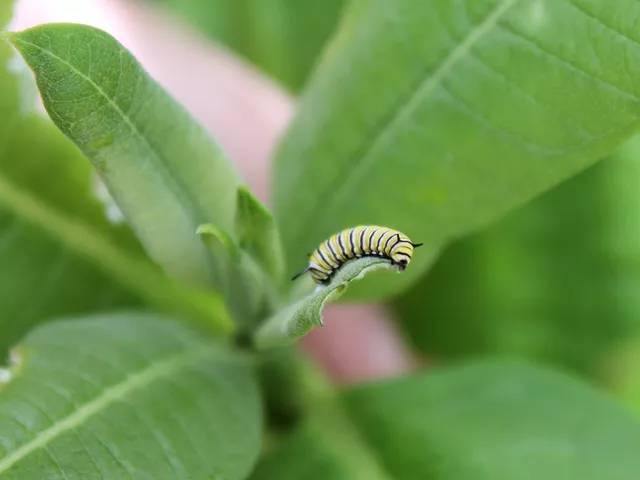
This is a later instar monarch caterpillar. Monarch caterpillars eat and grow through five instars. They will grow 2,000 times bigger and molt their exoskeleton (each molt is an instar) over a couple of weeks.
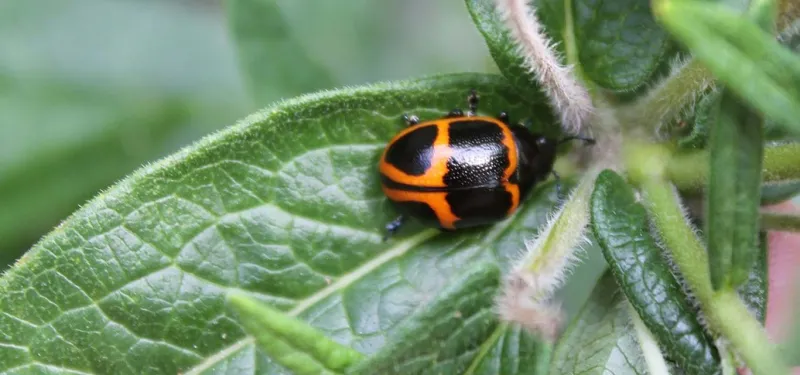
Monarch butterflies are not the only critters that like milkweed. This is a swamp milkweed leaf beetle. Notice how it has the same aposematic (warning) colors as the monarch.
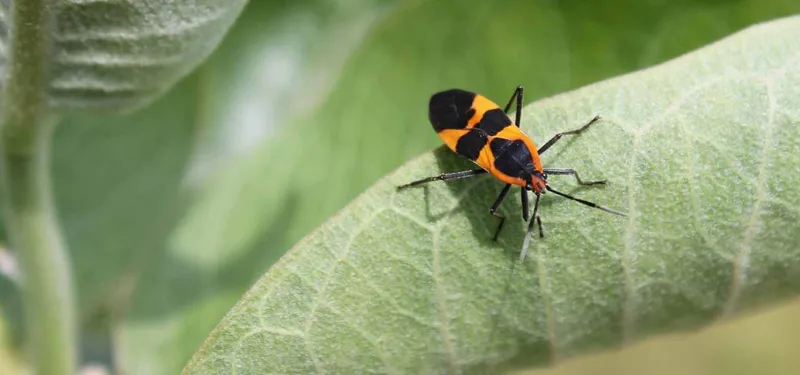
This is a milkweed bug that also has orange and black colors.
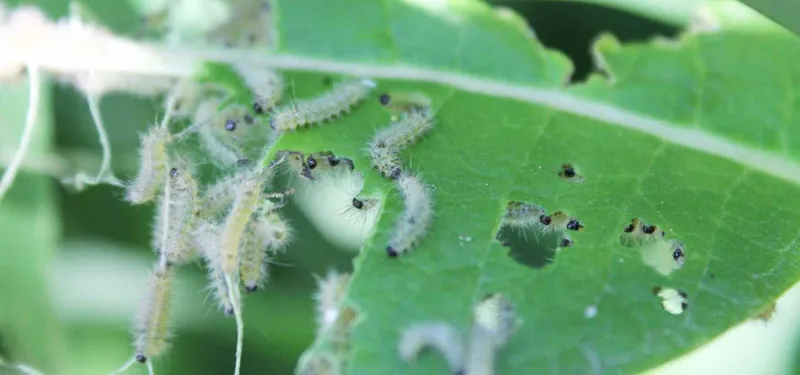
These are early instar milkweed tussock (or tiger) moth caterpillars. They arrive later in the season and chew up the older, tougher milkweed leaves.
Here is a skeletonized milkweed leaf after the milkweed tussock moth caterpillars were finished.
Milkweed supports a diverse array of invertebrates. You also may see tiny little orange dots on your milkweed. They are oleander aphids, which are the favorite snack for ladybug beetles. You do not need to worry about all the milkweed visitors. They have been part of the milkweed food web long before people started planting milkweed. Nature has a great system of checks and balances. Milkweed thrives with all this activity.
If the old leaves are left around too long, they could be host to parasites that could affect the monarch. One such parasite, Ophryocystis elektroscirrha (or O.e. for short), has been linked to tropical milkweed. When people plant tropical milkweed in the southeastern US, the plants may not go dormant over the winter like our native milkweed. This gives O.e. an opportunity to live longer and possibly infect more monarchs. Monarchs need milkweed to start going dormant as one of the signals telling them to fly south. If you lose milkweed to aphids or tussock moths, please do not use chemicals (natural or manufactured). The answer is to plant more milkweed.
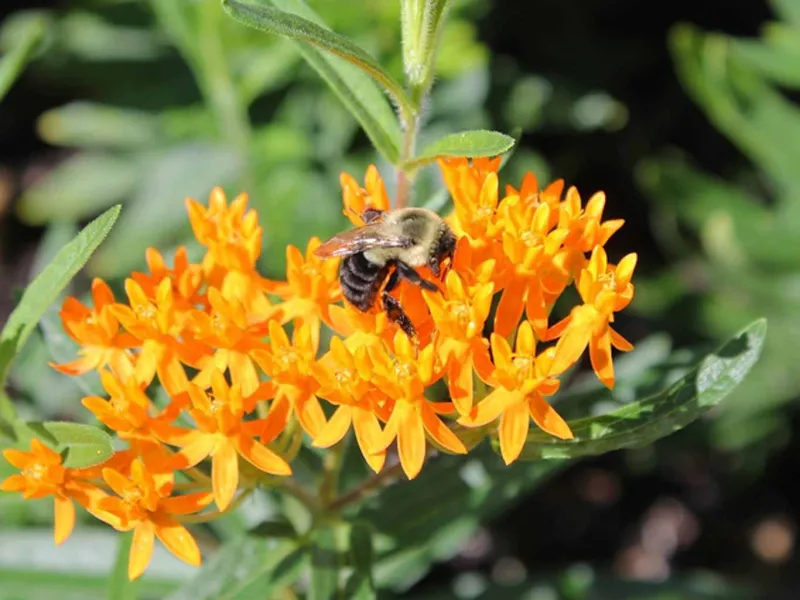
Butterfly weed (a native milkweed in our area) has nectar that this bumblebee enjoys.
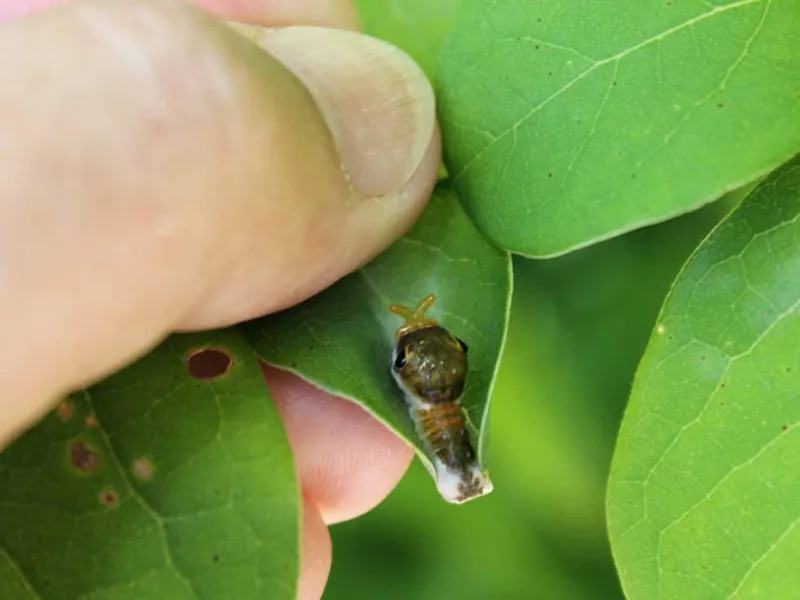
Inside this folded leaf is a spicebush swallowtail caterpillar. It uses multiple survival skills: lives in a leaf tent looks like bird poop, has false eyespots on the back of what looks like their head, and has yellow horns (osmeterium) that are really glands that look scary and smell bad. They try hard to look like snakes so birds will not eat them. Caterpillars are a major food source for birds (another reason not to use any chemicals!) You can find spicebush swallowtail caterpillars on spicebushes and sassafras trees.
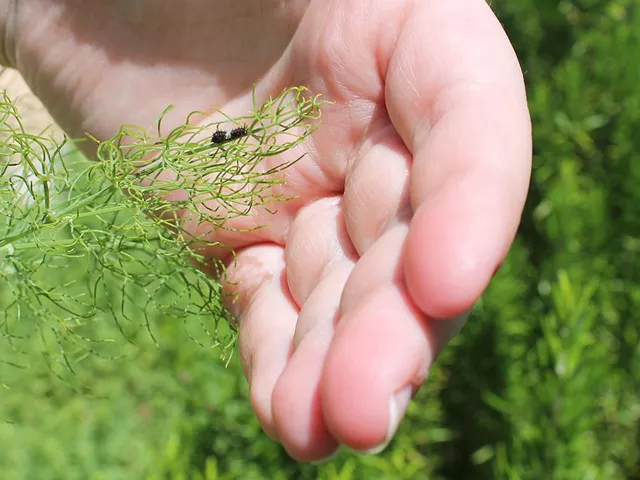
We have some fennel and dill planted in our learning and butterfly gardens. The tiny little black and white caterpillar is an early instar black swallowtail caterpillar. They are a great species to teach children about the butterfly life cycle. They are not threatened like the monarch butterfly, and they can be considered a pest by people who want to harvest their dill, fennel, parsley, or cilantro. They will also use Queen Anne’s lace and carrot greenery for host plants.
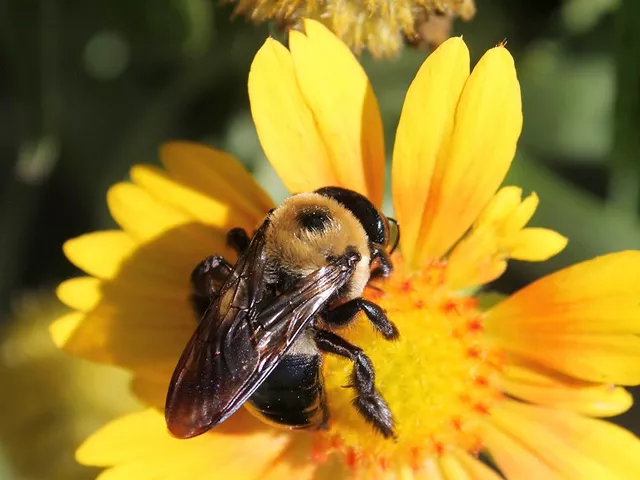
Since Kidzone has so many pollinator plants throughout, you can find native pollinators everywhere. Here is a carpenter bee (note the smooth, shiny abdomen) on a blanket flower.
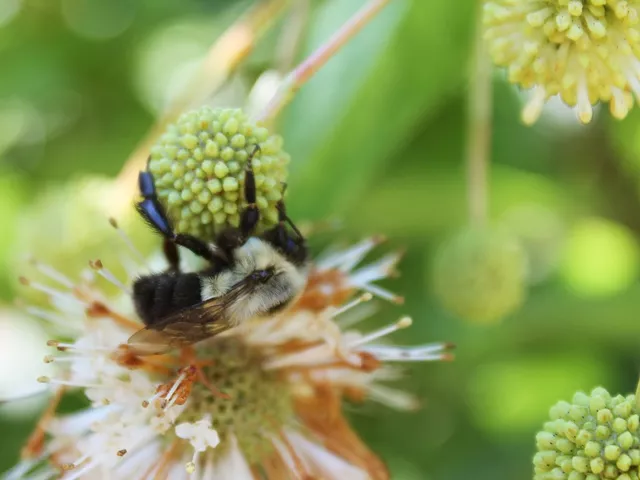
Here is a bumblebee (note the fuzzy abdomen) on a buttonbush.
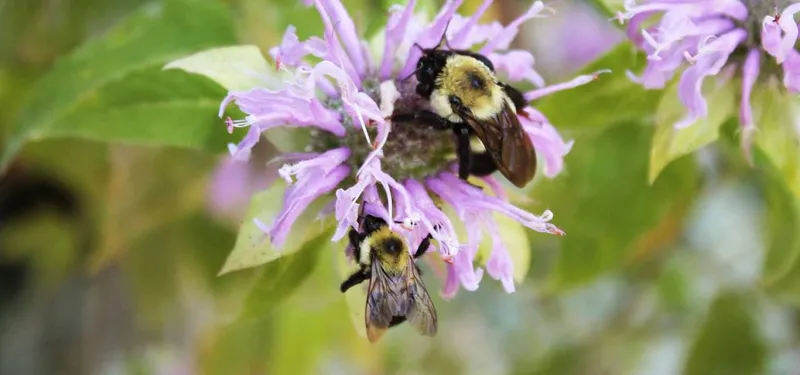
Here are two different types of bumblebees on bee balm.
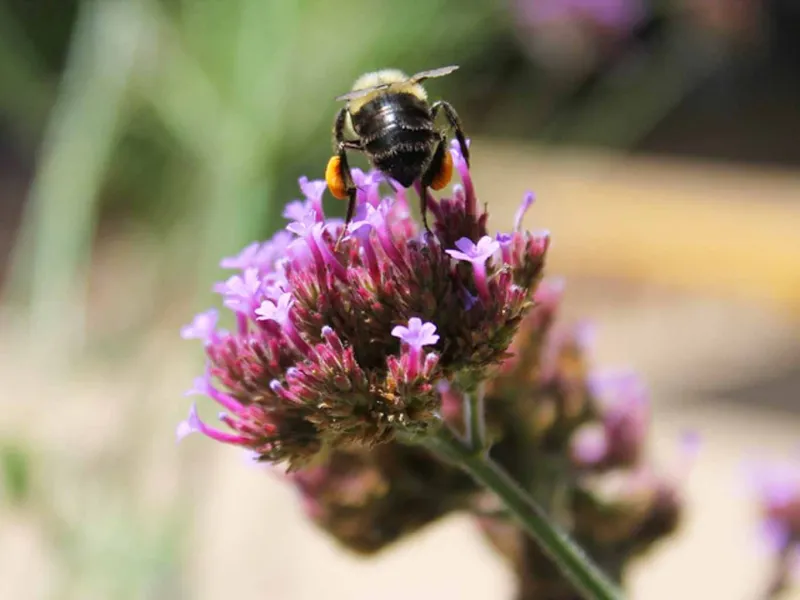
Take a look at the pollen baskets on this bee! The purple flower is verbena.
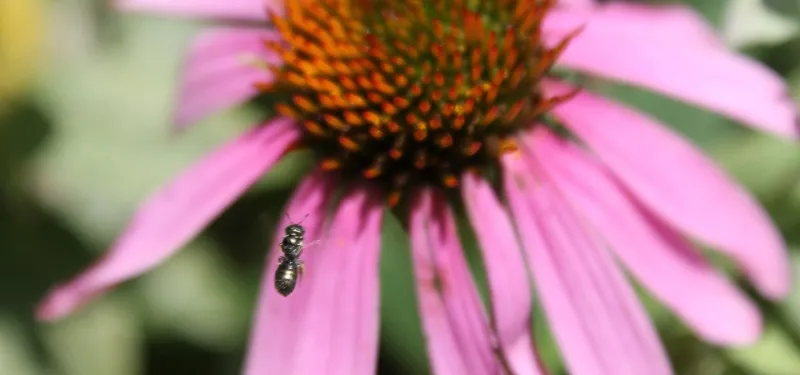
This is a metallic sweat bee visiting a purple coneflower.
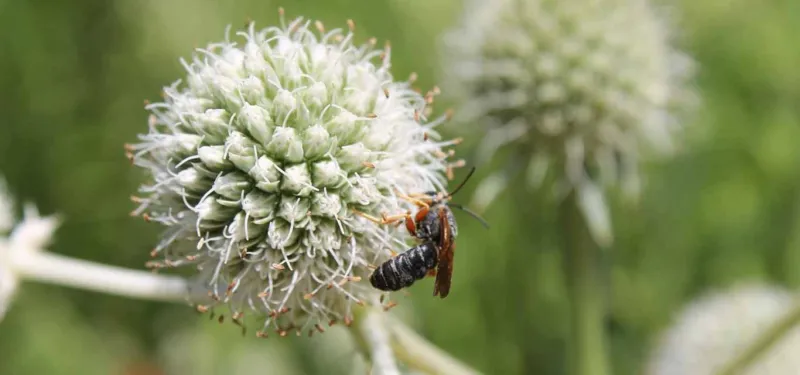
Wasps are pollinators too. This one is enjoying the flower of a rattlesnake master.
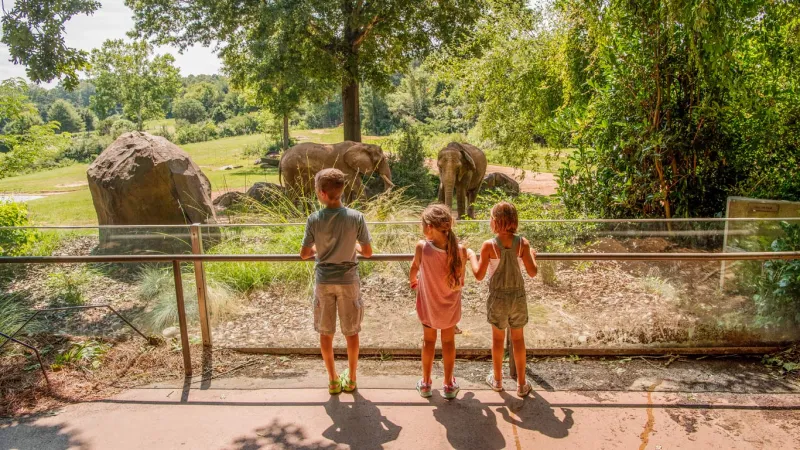
Beetles are pollinators as well. Here is one on a blanket flower. This is from the Acmaeodera family of beetles. If you look closely, you can see pollen on its back.
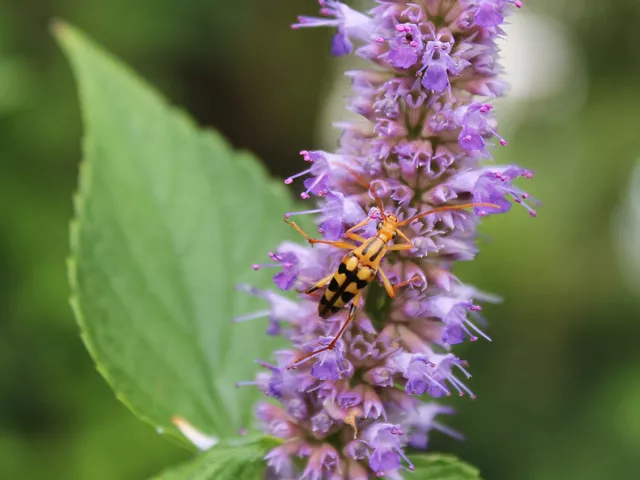
This is a long horn beetle on anise hyssop. Next time you are near the learning garden (near the mud café), rub your fingers on this plant and take a whiff!
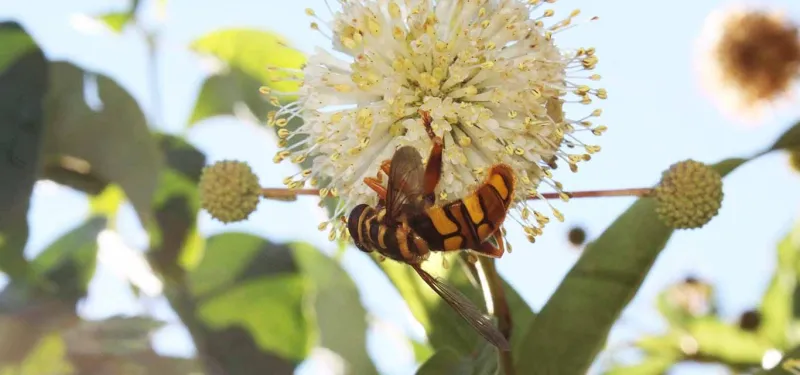
Butterflies are not the only ones who use mimicry for protection. This hoverfly is on a buttonbush trying to look like a mean yellow stripey thing like a yellow jacket or other wasps. The clue that it is a fly: the huge eyes that look like giant sunglasses!
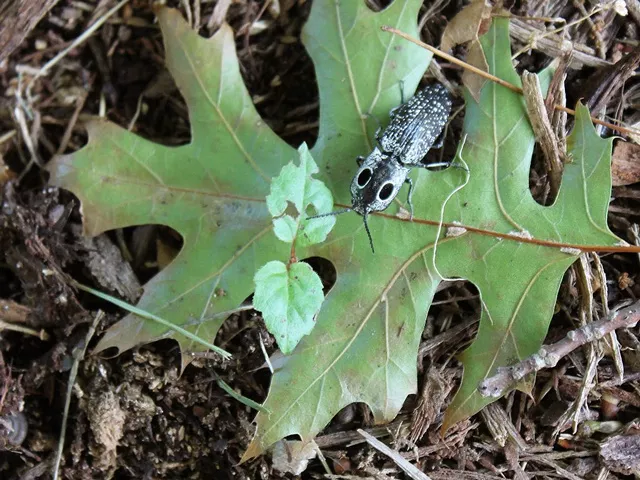
This eyed click beetle uses mimicry too. Imagine it on the side of a tree. The colors would blend into the bark, and all a predator would see are two big eyes.

Our final invertebrate is this green lynx spider. Note the camouflage coloration.
If you would like to host some of these cool critters, why not come to the Zoo’s plant sale on August 28!
If you have children looking for something fun to do this summer, sign up for the ecoExplore program run by the North Carolina Arboretum. It is free to join. All you need to do is create an account for each child and then let them take photos of their wildlife observations. You upload the photos to their account. They can earn badges and cool prizes. It is a super fun way to learn about nature. And it is entomology season for them right now—so it is the perfect time to get outside and look for tiny critters! Here is the website: https://www.ecoexplore.net/
And you do not have to be a child to have fun learning about tiny critters. Adults can sign up for the free app iNaturalist. The Zoo even has its own group—Wildlife at NC Zoo. You can help scientists know which species live here (in the wild) and keep a record of all your observations. Here is the link: https://www.inaturalist.org/
